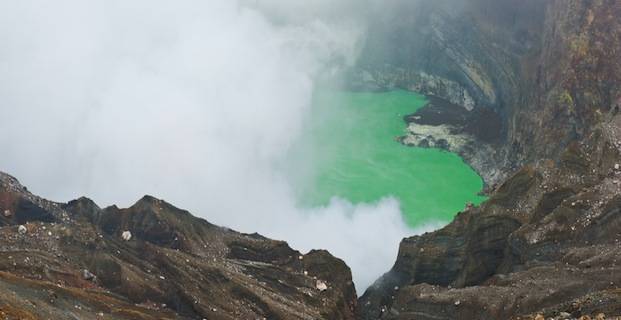Super volcano
Volcanoes can be both very impressive and highly destructive. While
most people are used to watching the big shows of lava spewing from
volcanoes on TV and some while volcano watching during their vacations,
no one can possibly be prepared to the amount of disaster that a
supervolcano would cause. In recorded history no one has experienced the
fury of a supervolcano first hand but it is believed the impact that
such an eruption could have would be deadly not only to people in the
vicinity, but even for people on the other side of the world.
Known Supervolcanoes (Yellowstone)
There are six supervolcanoes which are currently known by most
people. The many visitors of Yellowstone Park may not realize it, but
they are walking on top of one of the biggest threats to humanity. To
understand how massive an eruption from one of these volcanoes can be,
we can look at what took place in the Yellowstone Caldera volcano that
erupted 2 million years ago. The size of the eruption was so big that
the amount of ash ejected was over 8,000 times the amount ejected by the
1980 eruption of Mount St. Helens.
Long Valley Caldera
The Long Valley Caldera is located in the eastern side of the state
of California and it is second only to Yellowstone. It’s last eruption,
though not as massive as the one in Yellowstone supervolcano could still
cause tremendous damage to the population in the world; that eruption
took place close to 760,000 years ago, and the result was 2,000 times
the size of the eruption of Mount St Helens.
Valles Caldera
The Valles Caldera is located northern of New Mexico and its last
supervolcano eruption happened over a 50,000 years ago. The effects of
the supervolcano eruption at the Valles Caldera were felt as far as Iowa
as some ash and rock landed all the way there.
Lake Toba
Lake Toba in Indonesia is big; in fact it is actually bigger than the
Yellowstone caldera. The last time this supervolcano erupted was 74,000
years ago. The eruption that was presented was 5,000 times larger than
the Mount St. Helens eruption and it has been suggested by several
scientists that this event was so massive that it changed the trajectory
of humanity and resulted in what we see today.
Taupo Caldera
The Taupo Caldera is located in New Zealand and though now the view
that you get is that s a spectacular lake, that lake was created by an
eruption 26,500 years ago; the basin which was left after the eruption
is what became the lake you see today. This massive monster is not a
dead supervolcano. Volcanic activity can be observed in the area in the
form of venting and hot springs.
Aira Caldera
This Caldera in Japan is pretty close to the city of Kagoshima. This
is not a sleeping giant; in fact there are several earthquakes in the
area caused by it and the Sakura-jima volcano is still active. Those are
clear signs that the caldera is still active and it is a reason for
concern for scientists.

No comments:
Post a Comment